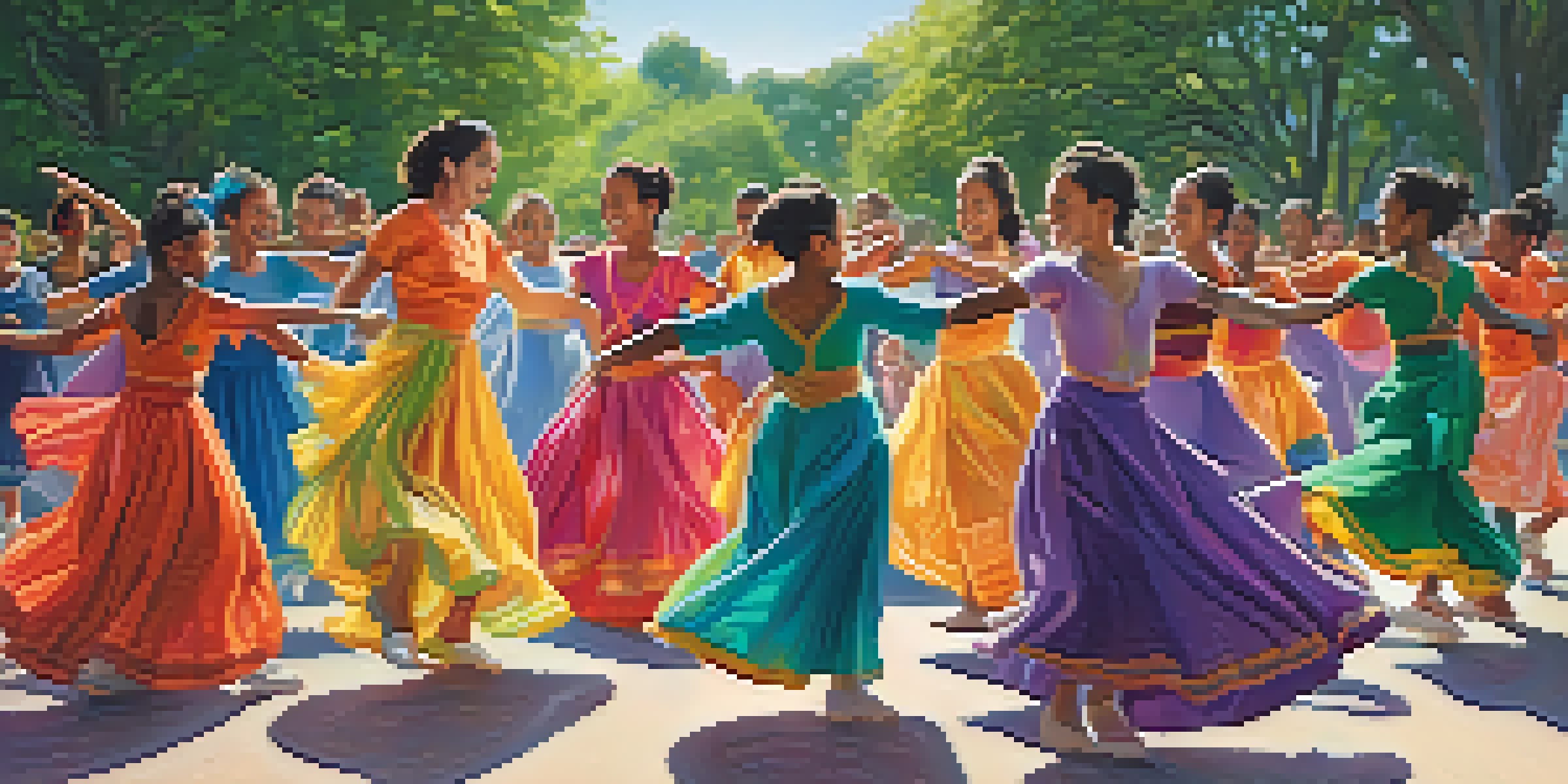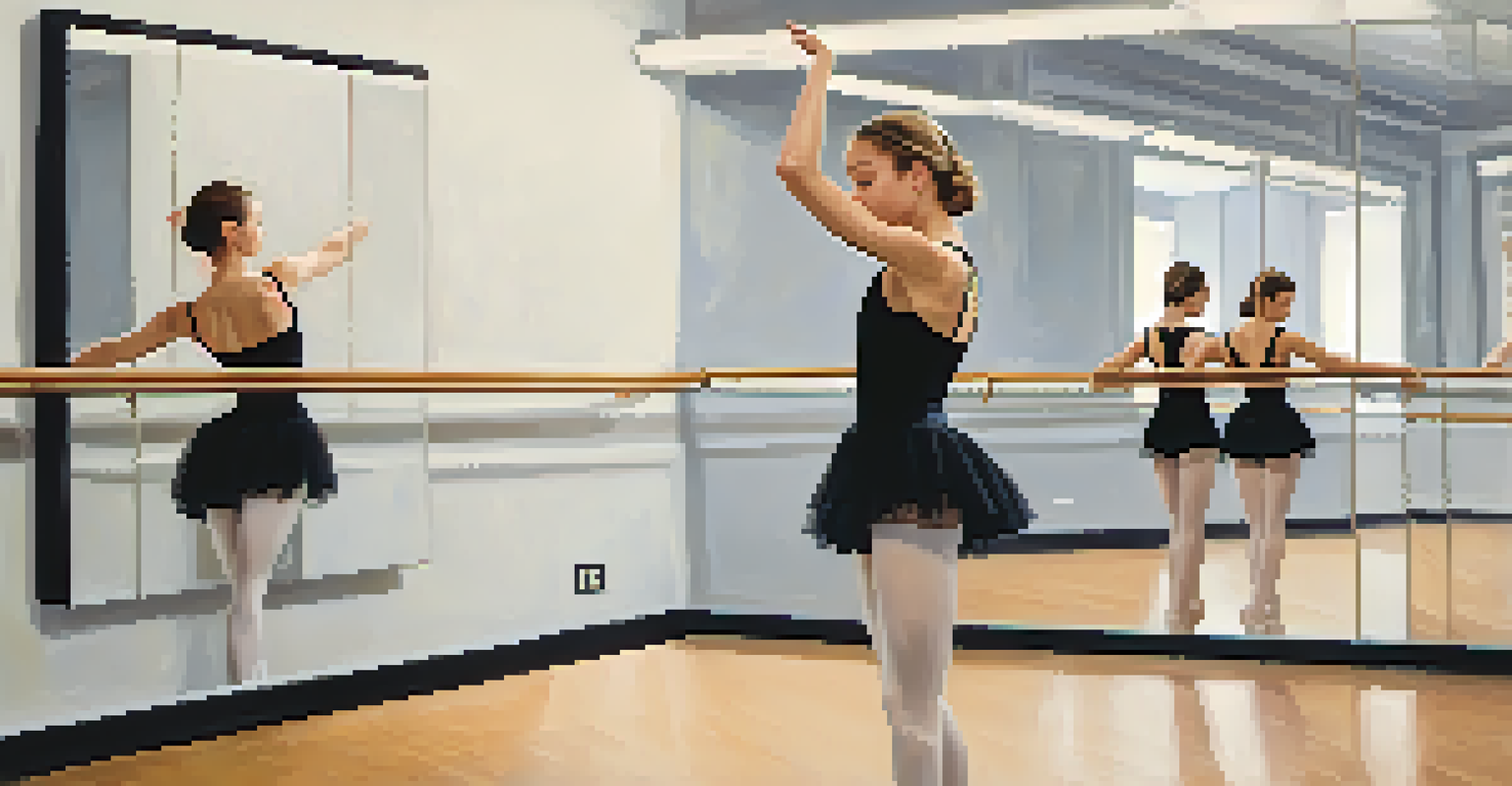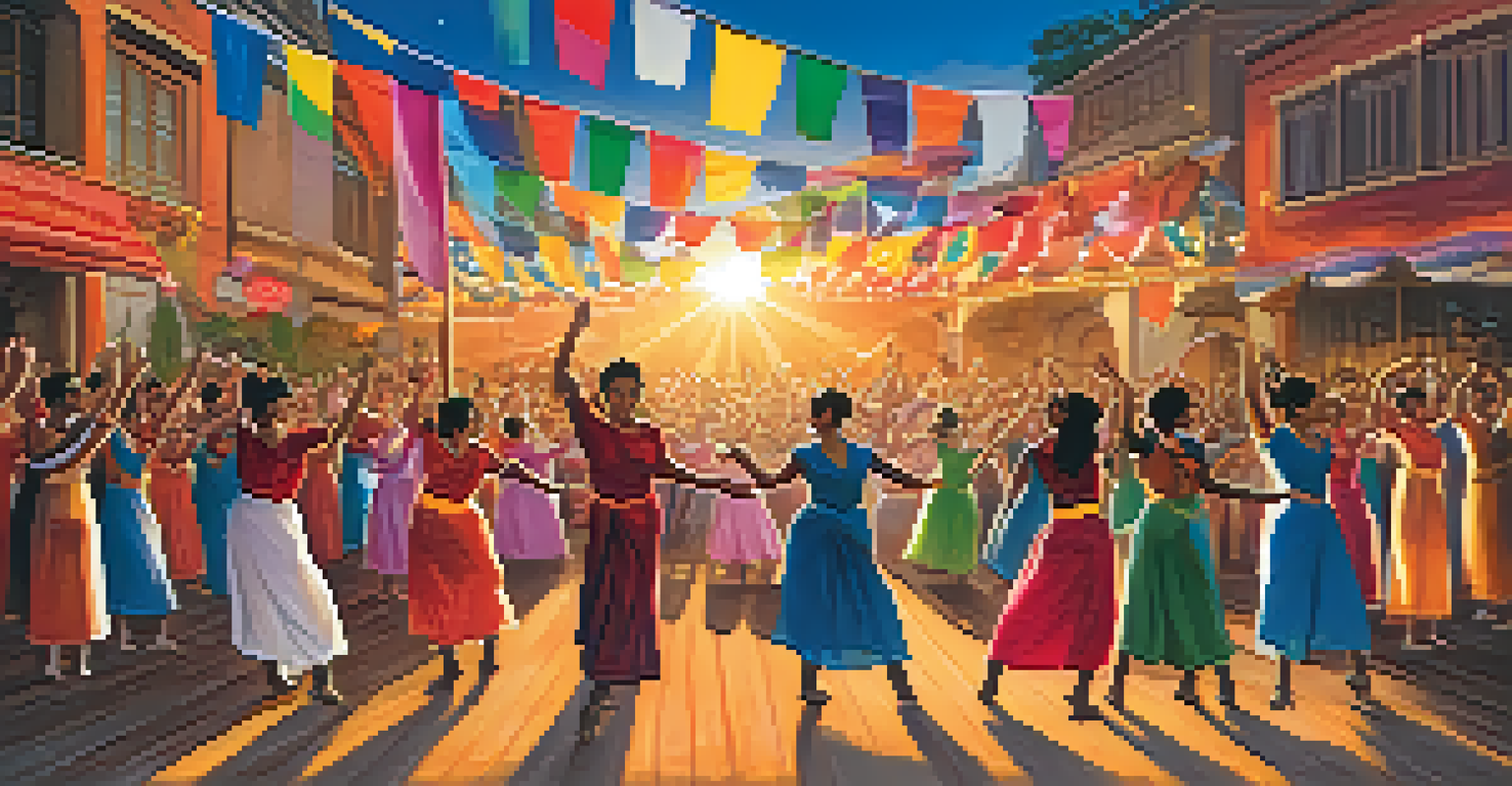Cultural Policies and Their Impact on Dance Opportunities

Understanding Cultural Policies and Their Scope
Cultural policies are guidelines and regulations that govern the arts and culture sector in a society. They can include funding for the arts, educational programs, and regulations that affect how cultural expressions are shared and preserved. These policies play a pivotal role in shaping the landscape of various art forms, including dance, as they can either foster creativity or impose restrictions.
Culture is the widening of the mind and of the spirit.
For example, a country with robust support for the arts may provide grants for dance companies, helping them create innovative works. Conversely, in regions where funding is limited or tied to specific cultural narratives, dance opportunities may suffer, restricting the diversity of expressions available to artists. Understanding these dynamics is essential for appreciating how cultural policies impact the dance community.
Ultimately, cultural policies can either uplift the dance scene by encouraging new talent and diverse forms of expression or stifle it through lack of support and engagement. As we delve deeper into the impact of these policies, we will uncover their nuanced effects on dance opportunities around the world.
The Role of Government in Supporting Dance
Governments play a crucial role in shaping cultural policies that directly impact the dance community. Through funding, grants, and programs, they can provide vital resources that enable dance companies and artists to thrive. For instance, countries like France and Canada have established national arts councils that allocate funding specifically for dance projects, ensuring a vibrant ecosystem for the art form.

In contrast, areas with minimal government support often see a decline in dance opportunities. Without sufficient funding, many dance companies struggle to create new work or even sustain their operations. This highlights the importance of government initiatives in promoting dance as a vital cultural expression that enriches the community.
Cultural Policies Shape Dance Landscape
Cultural policies play a crucial role in promoting or restricting dance opportunities, influencing creativity and diversity within the art form.
Moreover, government policies can also influence education and accessibility in dance. Programs that integrate dance into school curriculums or community centers can help nurture future generations of dancers, ensuring the continued evolution of the art form.
Cultural Policies and Dance Accessibility
Accessibility in dance is significantly influenced by cultural policies that dictate funding and programming. When cultural policies prioritize inclusivity, they can lead to initiatives that make dance more accessible to underrepresented communities. For example, subsidized dance classes in underserved neighborhoods can open doors for aspiring dancers who might not otherwise have the opportunity to participate.
The arts are not a luxury; they are a necessity for our lives.
On the flip side, if cultural policies neglect accessibility, many talented individuals may be left out of the dance scene. This can create a homogenized artistic landscape, where only certain styles or voices are represented. Consequently, it's essential for policymakers to consider how their decisions impact the diversity of dance opportunities available.
Moreover, cultural policies can also shape audience accessibility, such as funding for free performances or educational workshops. Such initiatives not only foster a love for dance but also bridge the gap between artists and the community, creating a more vibrant cultural dialogue.
The Impact of Local vs. National Policies on Dance
The impact of cultural policies can vary greatly between local and national levels, leading to distinct outcomes for dance opportunities. Local policies often reflect community needs and values, potentially allowing for more tailored support for local dance companies and initiatives. For instance, a city may fund a local festival that showcases diverse dance forms, giving artists a platform to express their creativity.
Conversely, national policies can create overarching frameworks that influence how local initiatives develop. For example, if a national government prioritizes certain cultural narratives, local dance companies may feel pressured to align with these themes rather than pursue their unique artistic visions. This can lead to a disconnect between community desires and the support available.
Government Support Is Vital for Dance
Robust government funding and initiatives are essential for sustaining dance companies and fostering future talent in the community.
Navigating these differing levels of policy can be challenging for dance artists and organizations. Striking a balance between local creativity and national support is crucial for fostering a thriving dance community that reflects the rich tapestry of cultural identities.
Globalization and Its Effects on Dance Opportunities
Globalization has significantly impacted cultural policies, reshaping dance opportunities across borders. As cultures blend and interact, dance forms from different regions are increasingly influencing one another, leading to innovative new styles. However, this also raises questions about cultural appropriation and the preservation of traditional dance forms.
Cultural policies that embrace globalization can help foster this exchange by promoting international collaborations and cross-cultural performances. For example, funding for international dance festivals can provide platforms for artists to share their work and learn from one another, enriching the global dance landscape.
However, without careful consideration, globalization can also threaten local dance traditions. Policymakers must be mindful of how they promote dance in a global context, ensuring that the voices of local artists are heard and respected amidst the influx of global influences.
The Role of Nonprofits in Enhancing Dance Opportunities
Nonprofit organizations play an essential role in shaping dance opportunities, often filling gaps left by governmental support. These entities can provide funding, resources, and advocacy for dance artists, helping to elevate the art form within communities. For instance, a nonprofit focused on dance education might offer scholarships to aspiring dancers, ensuring that financial barriers don't hinder talent.
Moreover, nonprofits often focus on specific missions, such as promoting diversity in dance or supporting marginalized communities. This targeted approach can lead to innovative programming that resonates with specific audiences, fostering a more inclusive dance environment. By championing underrepresented voices, these organizations contribute significantly to the richness of the dance landscape.
Globalization Influences Dance Diversity
While globalization enhances cross-cultural dance exchanges, it also poses challenges to the preservation of local dance traditions.
In addition, nonprofits often collaborate with local governments and businesses to create comprehensive support systems for dance artists. Such partnerships can amplify the impact of cultural policies, ultimately leading to a more vibrant and diverse dance community.
Cultural Policies and the Future of Dance
As we look to the future, the evolution of cultural policies will continue to shape dance opportunities in profound ways. Emerging trends, such as increased focus on mental health and well-being through the arts, may influence how policymakers approach funding and support for dance. This shift could lead to innovative programs that integrate dance into public health initiatives, highlighting its role in community wellness.
Additionally, the rise of digital platforms has transformed how dance is shared and experienced. Cultural policies that embrace technology can facilitate new avenues for artists to reach audiences, breaking down geographical barriers. For example, online dance classes and virtual performances have expanded access to dance education and appreciation.

Ultimately, the future of dance will depend on how effectively cultural policies adapt to changing societal needs. By prioritizing inclusivity, accessibility, and innovation, policymakers can ensure a thriving dance community that reflects the diverse voices and stories of our world.